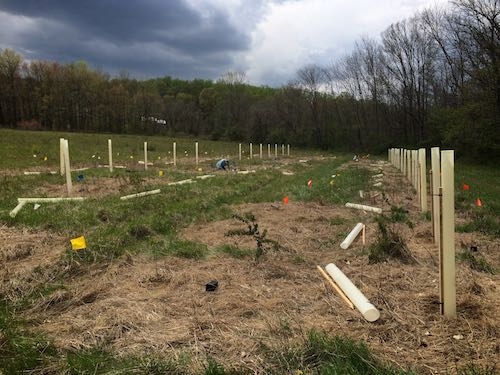Crow’s Nest: Tree plantings completed this week
By Daniel Barringer, Preserve Manager
This week we assisted with—and benefitted from—a research project that is being initiated at two Natural Lands Trust preserves (Crow’s Nest and Stroud). We helped researchers plant 108 trees as part of a project to evaluate varying levels of care put into maintaining seedling trees planted for riparian buffers: trees planted along streams to shade and cool streams and improve water quality.
The project is a partnership of Penn State University/College of Agricultural Sciences, Stroud Water Research Center, University of Pennsylvania Masters of Environmental Studies Program, and Natural Lands Trust.
Here are the tuliptree (Liriodendron tulipifera) seedlings before planting.

We chose a site on a newly-acquired parcel where we had identified a need to broaden the streamside forest. Researchers were looking for a location that also has a lot of weed pressure: here it is mainly multiflora rose and autumn olive, with lots of herbaceous weeds and grasses to compete with the trees.
The plot consists of a matrix of treatments of site preparation—the season before, immediately after planting, and none, as well as follow up care for zero to four years, and also side pruning to encourage the upward growth vs. no pruning. While it seems likely that more care will translate into better outcomes there may be a sweet spot this study identifies having the best return on the care investment.
Here are the tuliptrees being planted, with tube shelters to protect them from deer.

Oh, and the best part? We get to keep the trees, growing as part of a riparian buffer and early-successional forest that will kick-start succession past the stage where invasive plants cause the biggest land-management headaches.
